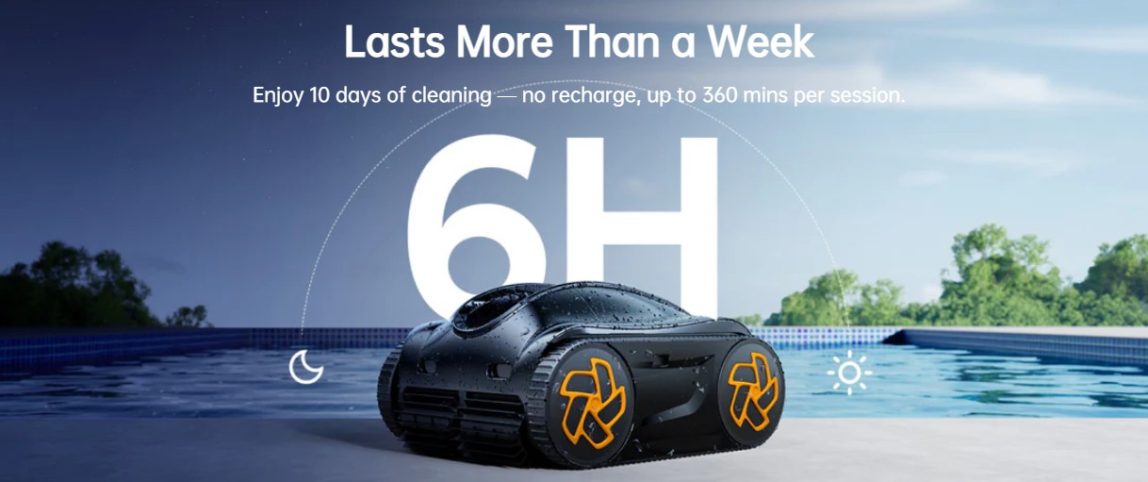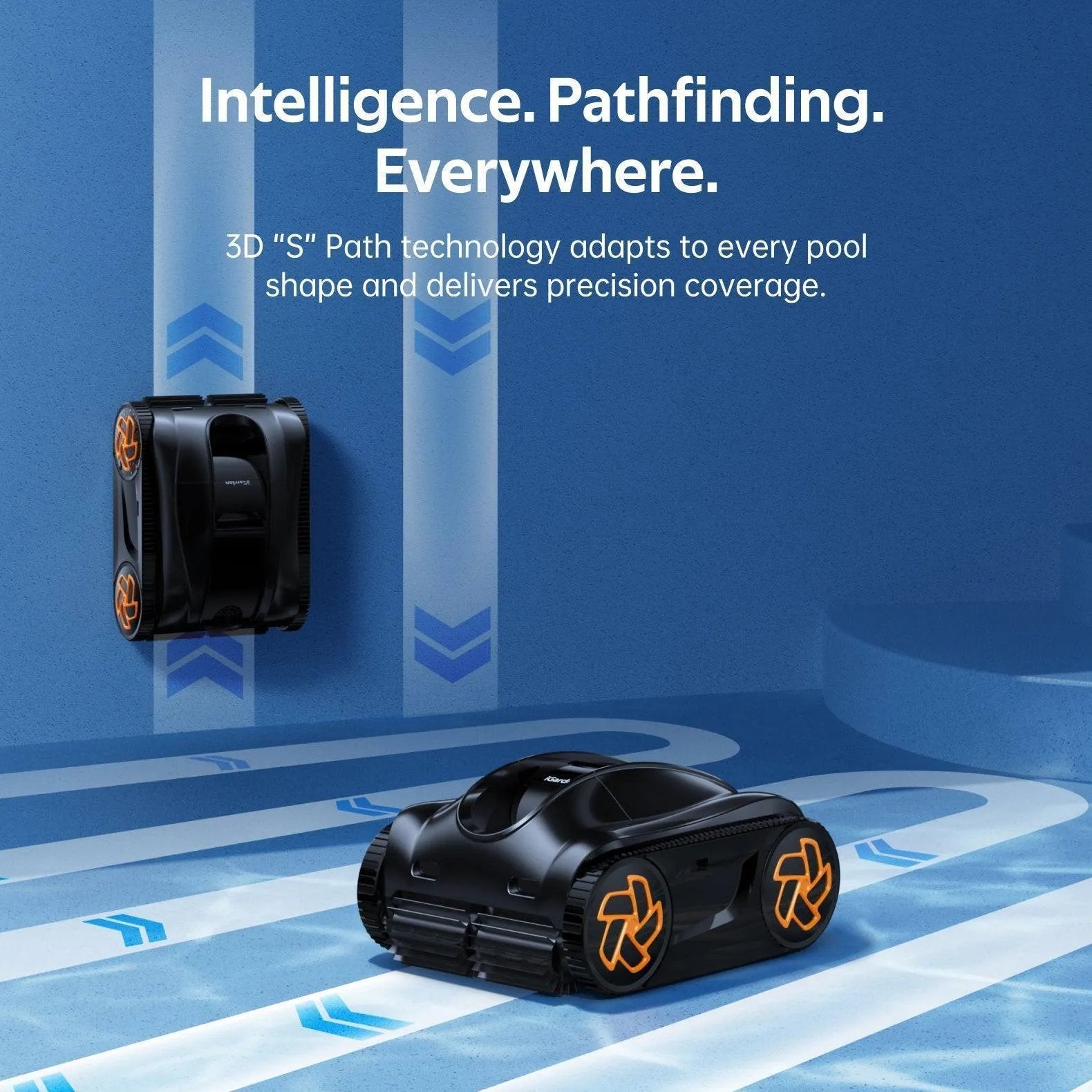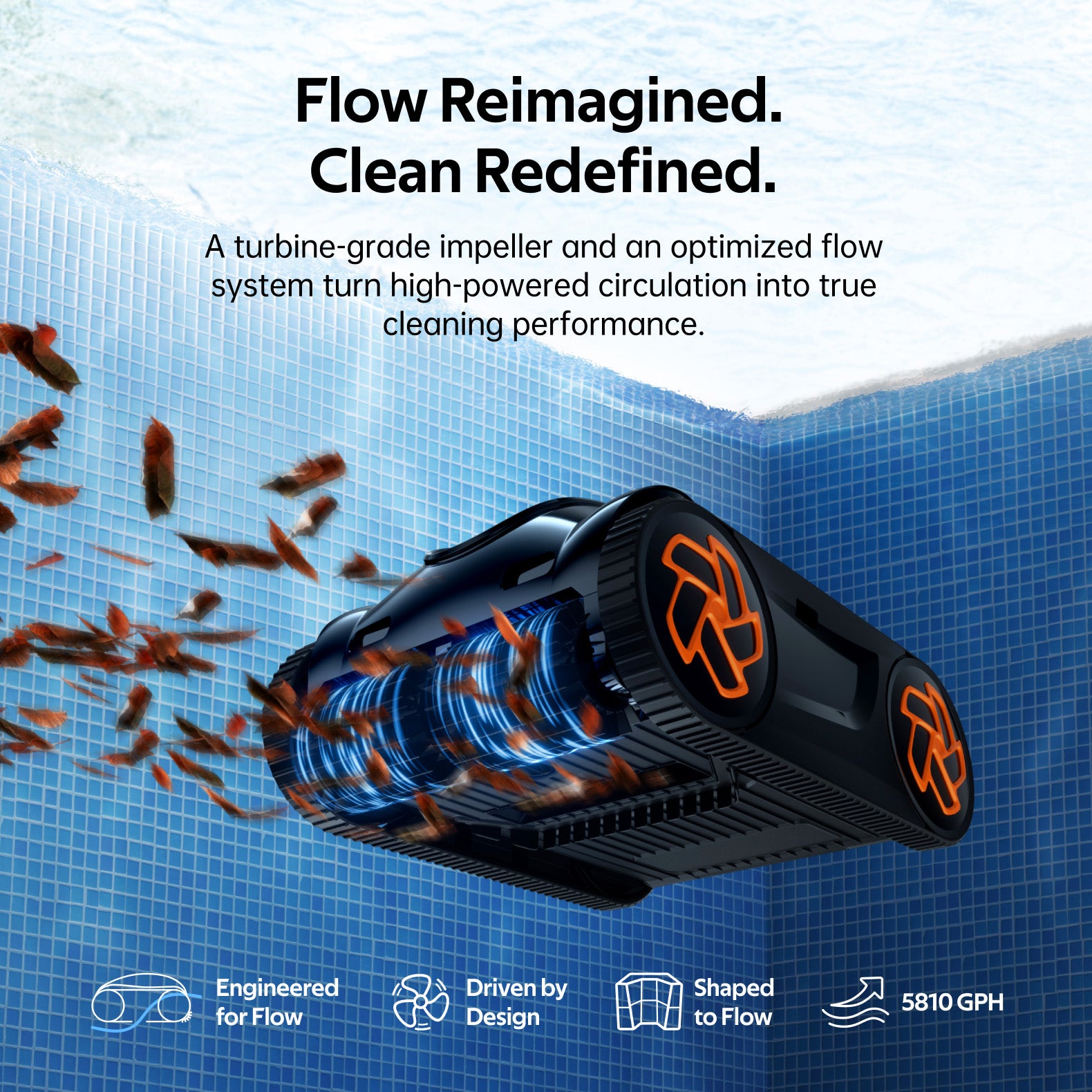Expert Insights on Heavy Debris Suction in Modern Pool Vacuums

Expert Insights on Heavy Debris Suction in Modern Pool Vacuums
Every pool owner dreads that moment when autumn leaves descend or spring storms dump massive debris into their pristine waters. While traditional pool vacuums have long struggled with heavy debris loads, leading to frustrating clogs and incomplete cleaning, modern automatic pool vacuum are revolutionizing the way we tackle this persistent challenge. Through groundbreaking engineering innovations in suction technology, advanced filtration systems, and intelligent controls, today's high-performance pool vacuums efficiently handle everything from dense leaf clusters to stubborn twigs. For tech-savvy homeowners seeking cutting-edge solutions, these smart cleaning systems offer unprecedented power, precision, and convenience, transforming what was once a laborious maintenance task into an automated, efficient process. This comprehensive analysis explores how recent technological advances are solving the heavy debris dilemma, ensuring your pool stays pristine with minimal intervention.
The Heavy Debris Challenge: Why Conventional Vacuums Fall Short
Traditional pool vacuums face significant limitations when confronting heavy debris loads. Large organic materials like oak leaves, pine needles, and fallen tree branches overwhelm basic suction mechanisms, leading to frequent clogs and system shutdowns. Acorns and seed pods pose particular challenges due to their density and irregular shapes, often becoming lodged in standard intake ports. These conventional systems typically rely on single-stage suction that lacks the power to lift and transport heavier materials effectively.

When these basic vacuums fail to handle heavy debris, the consequences extend beyond mere inconvenience. Accumulated organic matter decomposing in the pool creates excessive strain on filtration equipment and chemical balance systems. The resulting water chemistry imbalances can lead to algae growth and increased maintenance costs. For tech-savvy pool owners who value efficiency, the constant need for manual intervention defeats the purpose of automated cleaning. The time spent unclogging systems, manually removing debris, and performing additional water treatments represents a significant waste of resources that modern technology should eliminate.
Engineering Breakthroughs in Heavy Debris Suction Technology
Intelligent Design: Core Architecture Innovations
Modern pool vacuums incorporate sophisticated turbo brush systems that actively dislodge and lift dense materials from pool surfaces. Leading manufacturers like iGarden have developed dual-counter rotating brushes that create powerful vortexes to break apart leaf clusters and prevent debris from settling. Anti-tangle mechanisms employ innovative propulsion designs with specialized impellers that automatically reverse direction when encountering potential snags. The most advanced models utilize AI-powered mapping systems to identify and target debris hotspots, optimizing cleaning paths based on historical data and real-time sensor feedback.

Advanced Filtration: Multi-Stage Containment Systems
Revolutionary micro-mesh filtration technology represents a quantum leap over traditional cartridge systems, featuring ultra-fine mesh patterns that trap particles as small as 2 microns while maintaining powerful suction for larger debris. Advanced cyclonic separation chambers pre-filter heavy materials before they reach the main filtration system, preventing clogs and maintaining consistent performance. These systems incorporate self-cleaning mechanisms that automatically backwash accumulated debris, extending operational time and reducing maintenance requirements. The integration of pressure sensors monitors filtration efficiency in real-time, adjusting suction power to maintain optimal performance even under heavy debris loads.
Smart Control Integration for User-Friendly Operation
Modern pool vacuums leverage sophisticated control systems that put unprecedented power at users' fingertips. Through intuitive mobile applications, homeowners can fine-tune suction intensity based on debris conditions, adjusting power levels from gentle leaf collection to maximum force for heavy storm cleanup. The smart zoning capability enables users to create custom cleaning schedules for areas prone to debris accumulation, such as spots under overhanging trees or near garden beds. Voice control integration through popular smart home platforms allows hands-free operation, with commands like "increase suction in the deep end" or "start heavy debris mode."
These intelligent systems continuously learn from cleaning patterns, automatically adjusting their approach based on seasonal debris changes and user preferences. Real-time monitoring provides instant alerts about debris levels, filter status, and cleaning progress through smartphone notifications. Remote diagnostics enable proactive maintenance, while over-the-air updates ensure the vacuum's software remains optimized for peak performance. For tech-savvy pool owners, this level of control transforms pool maintenance from a reactive chore into a streamlined, automated process that adapts to their specific needs and schedule.
Performance Analysis: Testing Heavy Debris Suction Capabilities
Suction Power Metrics and Real-World Testing
Modern pool vacuums demonstrate remarkable suction capabilities, with top performers achieving flow rates exceeding 70 gallons per minute and pressure levels up to 2.5 PSI. In standardized testing environments, leading models consistently outperform traditional units, processing up to 30 pounds of wet oak leaves per hour without clogging. Advanced units maintain 95% efficiency while climbing 45-degree slopes, even when carrying full debris loads. Independent laboratory testing reveals superior performance in challenging scenarios, such as removing waterlogged palm fronds and dense pine needle accumulations that typically overwhelm conventional systems.
Durability Under Extreme Debris Conditions
Rigorous stress testing demonstrates remarkable resilience in modern vacuum motors, maintaining consistent performance through 1,000-hour continuous operation trials with heavy debris loads. Key components undergo accelerated wear testing, simulating years of exposure to organic matter, chlorine, and UV radiation. Premium models show less than 5% performance degradation after processing equivalent to five years of heavy seasonal debris. Diagnostic data from field deployments confirms sustained suction power, with smart sensors automatically adjusting motor output to prevent burnout during intense cleaning cycles. Long-term reliability studies indicate a mean time between failures exceeding 5,000 operating hours, significantly outpacing traditional vacuum systems in durability metrics.
Selecting Your Heavy Debris Solution: Buyer's Framework
When evaluating pool vacuums for heavy debris management, start by assessing your specific debris profile. Properties with mature trees require vacuums with wider intake ports and enhanced anti-clogging features, while those dealing primarily with fine organic matter benefit from advanced micro-filtration systems. Consider your pool's dimensions carefully - larger pools demand extended battery life and greater debris capacity, while complex shapes necessitate superior navigation capabilities. Surface material also impacts performance, with textured finishes requiring more aggressive brush systems for thorough cleaning.
Smart features should align with your automation preferences. Prioritize WiFi connectivity and mobile app control if you value remote monitoring and scheduling flexibility. For maximum convenience, look for models offering voice assistant integration and automated zone cleaning. Factor in maintenance requirements - self-cleaning filters and tool-free debris access significantly reduce upkeep time. Advanced diagnostic capabilities help prevent issues before they impact performance, while modular designs simplify component replacement. Consider systems that offer firmware updates to ensure your investment continues evolving with new technology. This systematic approach ensures you select a vacuum that not only handles your current debris challenges but also provides the sophisticated features that tech-savvy pool owners demand.
The Future of Smart Pool Maintenance
The evolution of pool vacuum technology has fundamentally transformed how we tackle heavy debris challenges. Through the strategic integration of intelligent design architecture, advanced filtration systems, and intuitive smart controls, modern pool vacuums deliver unprecedented cleaning power and convenience. These innovations directly address the longstanding frustrations of dealing with seasonal debris overload, offering homeowners a truly automated solution that maintains consistent performance even under extreme conditions. As artificial intelligence continues to advance, we can expect even more sophisticated debris recognition capabilities, enabling these systems to automatically optimize their cleaning approach based on specific types and quantities of material. For optimal heavy debris management, focus on systems offering at least 60 GPM suction power, multi-stage filtration with self-cleaning capabilities, and comprehensive smart control features. With these technological advances, tech-savvy pool owners can finally achieve the perfect balance of powerful cleaning performance and effortless operation, ensuring their pools remain pristine year-round with minimal intervention.





